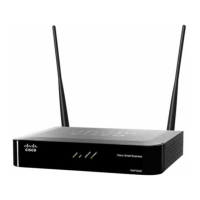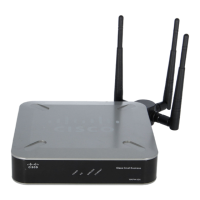9
Cisco Small Business WAP371 Wireless Access Point Administration Guide 129
Captive Portal
This chapter describes the Captive Portal (CP) feature, which allows you to block wireless
clients from accessing the network until user verification has been established. You can
configure CP verification to allow access for both guest and authenticated users.
Authenticated users must be validated against a database of authorized Captive Portal groups
or users before access is granted. The database can be stored locally on the WAP device or on
a RADIUS server.
Captive Portal consists of two CP instances. Each instance can be configured independently,
with different verification methods for each VAP or SSID. Cisco WAP371 devices operate
concurrently with some VAPs configured for CP authentication and other VAPs configured for
normal wireless authentication methods, such as WPA or WPA Enterprise.
This chapter includes these topics:
• Local Groups
• Local Users
• Instance Configuration
• Instance Association
• Web Portal Customization
• Captive Portal Global Configuration
• Authenticated Clients
• Failed Authentication Clients
Local Groups
Each local user is assigned to a user group. Each group is assigned to a CP instance. The group
facilitates managing the assignment of users to CP instances.

